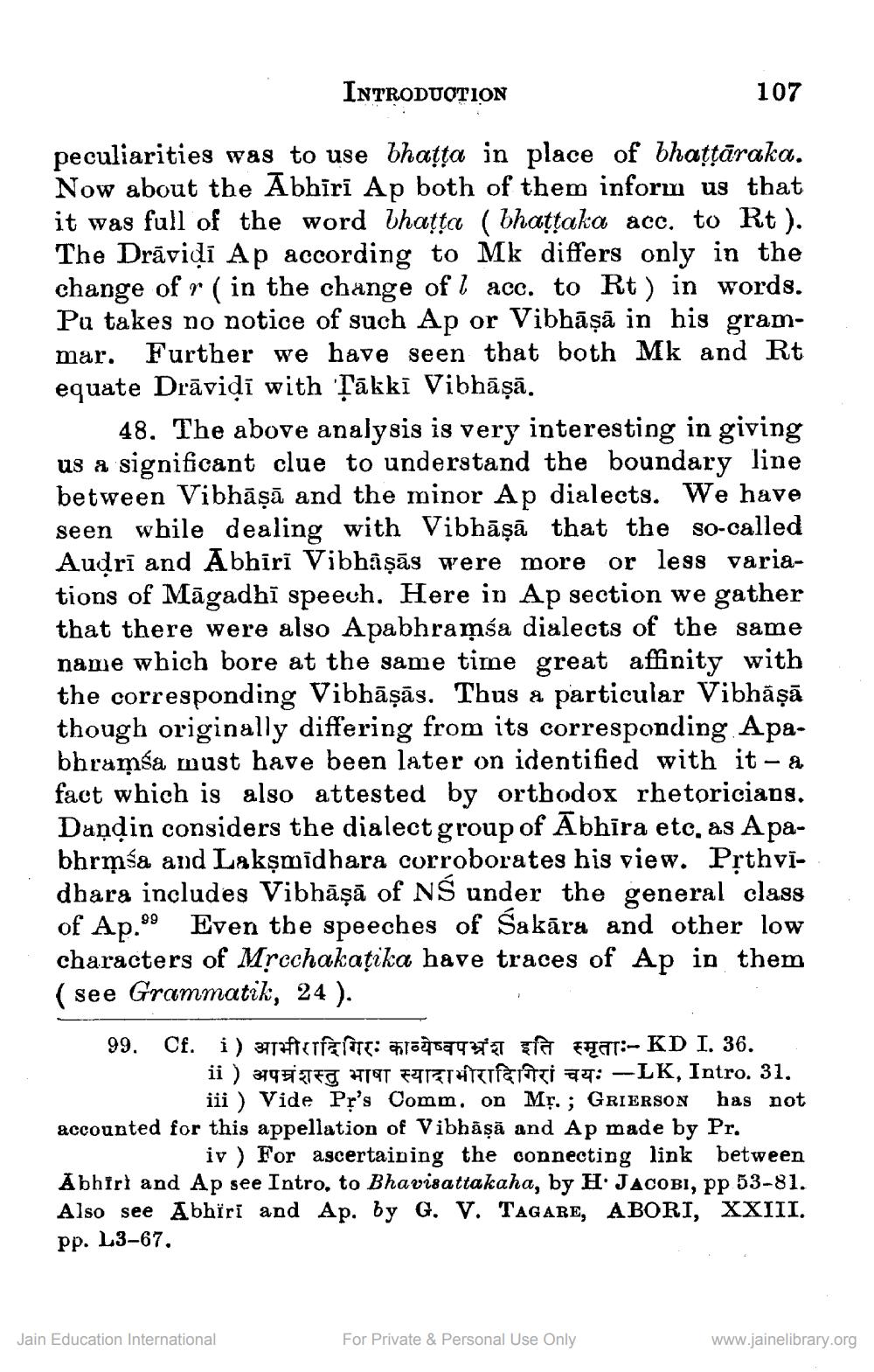________________
INTRODUCTION
107
peculiarities was to use bhatta in place of bhattāraka. Now about the Abhīrī Ap both of them inform us that it was full of the word bhatta (bhattaka acc. to Rt). The Drāvidi Ap according to Mk differs only in the change of r (in the change of l acc. to Rt) in words. Pa takes no notice of such Ap or Vibhāşā in his grammar. Further we have seen that both Mk and Rt equate Drāvidi with sākkī Vibhāṣā.
48. The above analysis is very interesting in giving us a significant clue to understand the boundary line between Vibhāṣā and the minor Ap dialects. We have seen while dealing with Vibhāṣā that the so-called Audri and Abhiri Vibhäşās were more or less variations of Māgadhi speech. Here in Ap section we gather that there were also Apabhraņģa dialects of the same name which bore at the same time great affinity with the corresponding Vibhāṣās. Thus a particular Vibhāşā though originally differing from its corresponding Apabhramsa must have been later on identified with it - a fact which is also attested by orthodox rhetoricians. Daņdin considers the dialect group of Abhira etc, as Apabhrmía and Lakşmidhara corroborates his view. Pșthvidhara includes Vibhāşā of NS under the general class of Ap.89 Even the speeches of Sakāra and other low characters of Mrcchakatika have traces of Ap in them (see Grammatik, 24 ).
99. Cf. i) 3713 TELITT: 1064** a fyat:- KD I. 36.
ii ) 2795TFG 219T FITETUTETTATTI FT: -LK, Intro. 31.
iii ) Vide Pr's Comm. on Mr. ; GRIERSON has not accounted for this appellation of Vibhāṣā and Ap made by Pr.
iv) For ascertaining the connecting link between Abhirt and Ap see Intro, to Bhavisattakaha, by H. JACOBI, pp 53-81. Also see Abhïrī and Ap. by G. V. TAGARE, ABORI, XXIII. pp. L3-67.
Jain Education International
For Private & Personal Use Only
www.jainelibrary.org




